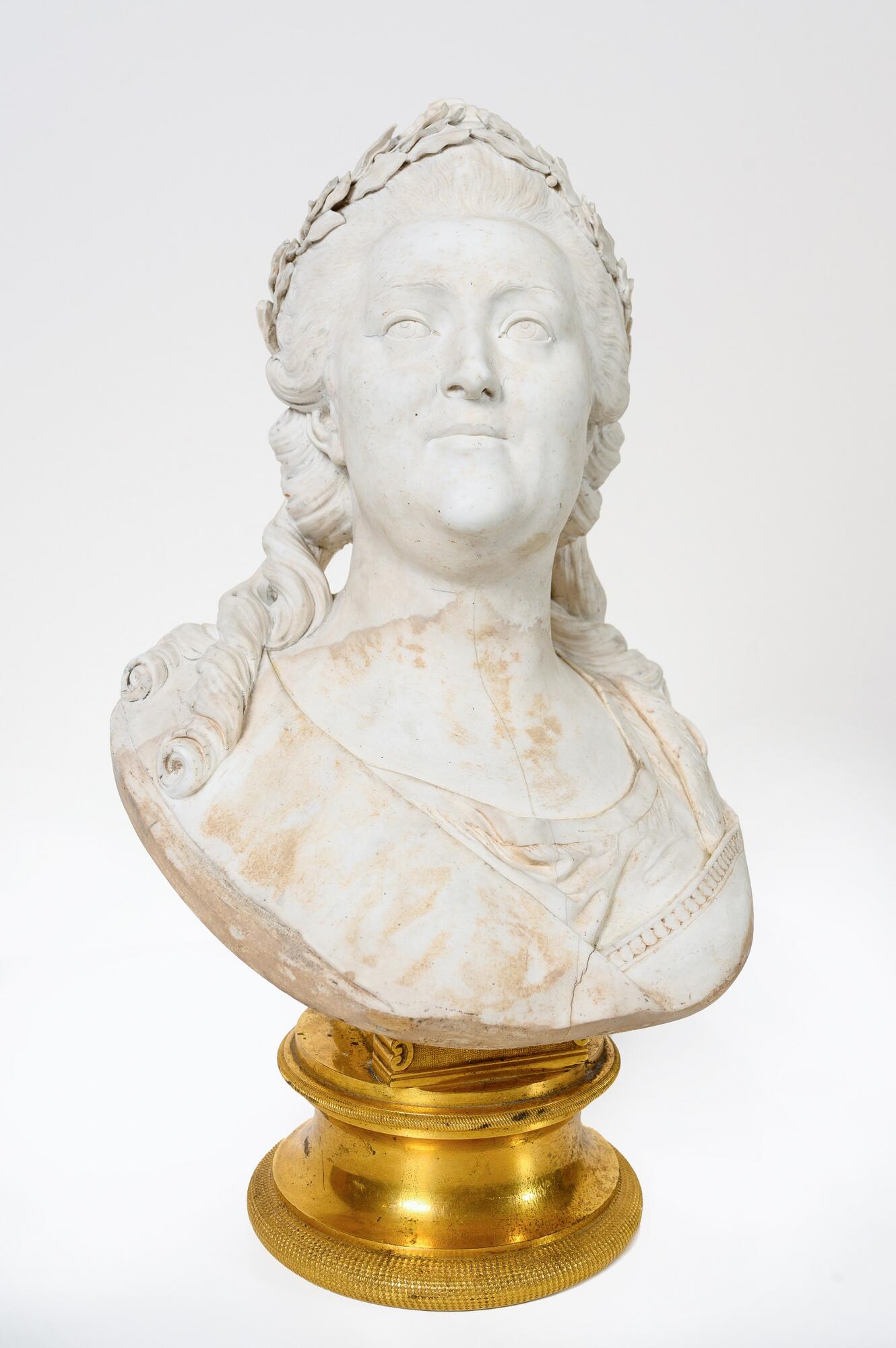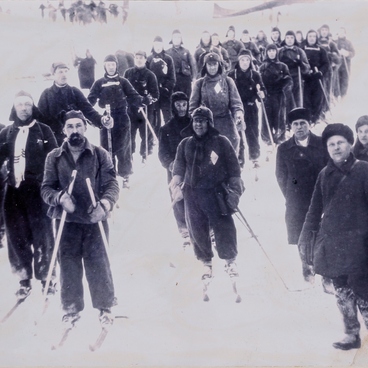The sculptural portrait of Empress Catherine II belonged to the Sheremetev family — the owners of the castle in the Yurino village. This bust is an exact copy of the sculpture, which was performed in 1783 by Fyodor Shubin. The sculptor of the original was born in 1740 in the Arkhangelsk province, in the family of a Pomeranian bone carver. With the support of Mikhail Lomonosov, Shubin entered the Academy of Arts in St. Petersburg, then studied in Paris with Jean-Baptiste Pigalle and in Rome with Joseph Nolleckens.
The works of Fyodor Shubin resembled Roman sculptures of the era of Emperor Octavian Augustus — the beginning of the 1st century AD. Empress Catherine the Great favored the master; he often portrayed members of the august family, including the empress herself.
The bust depicts Catherine II’s full face, with a slight turn of the head and a half-smile on the lips. Her hair is curled and laid in a high lush hairstyle; part of the strands according to the 18th century’s fashion is spread across her shoulders. The head of the empress is decorated with a laurel wreath — a symbol of glory and victory. On her right shoulder, the sculptor depicted the order ribbon — a mandatory detail of the solemn attire — and on her left, he marked the fur mantle, which means belonging to the royal family.
The bust is made of bisque — a type of unglazed porcelain, which resembles marble due to its matte and slightly rough surface. Such material was not suitable for dishware, but it was often used for miniature figurines, sculptures, and interior jewelry. To obtain bisque porcelain, ceramic articles were subjected only to primary firing at a temperature of 800–1000°C. At the same time, irreversible physical and chemical changes occurred in the porcelain mass, which became porous, solid, and too firm to need a glaze.
The bust of Catherine the Second created by Fyodor Shubin was so popular that in the 19th century it was copied several times. The Imperial Porcelain Factory released most copies, including sculptures on the 100th anniversary of the empress’s accession in 1862. Most probably, the bust from the Sheremetev castle in Yurino was also made there. However, the exact date of its production is unknown.
The works of Fyodor Shubin resembled Roman sculptures of the era of Emperor Octavian Augustus — the beginning of the 1st century AD. Empress Catherine the Great favored the master; he often portrayed members of the august family, including the empress herself.
The bust depicts Catherine II’s full face, with a slight turn of the head and a half-smile on the lips. Her hair is curled and laid in a high lush hairstyle; part of the strands according to the 18th century’s fashion is spread across her shoulders. The head of the empress is decorated with a laurel wreath — a symbol of glory and victory. On her right shoulder, the sculptor depicted the order ribbon — a mandatory detail of the solemn attire — and on her left, he marked the fur mantle, which means belonging to the royal family.
The bust is made of bisque — a type of unglazed porcelain, which resembles marble due to its matte and slightly rough surface. Such material was not suitable for dishware, but it was often used for miniature figurines, sculptures, and interior jewelry. To obtain bisque porcelain, ceramic articles were subjected only to primary firing at a temperature of 800–1000°C. At the same time, irreversible physical and chemical changes occurred in the porcelain mass, which became porous, solid, and too firm to need a glaze.
The bust of Catherine the Second created by Fyodor Shubin was so popular that in the 19th century it was copied several times. The Imperial Porcelain Factory released most copies, including sculptures on the 100th anniversary of the empress’s accession in 1862. Most probably, the bust from the Sheremetev castle in Yurino was also made there. However, the exact date of its production is unknown.



